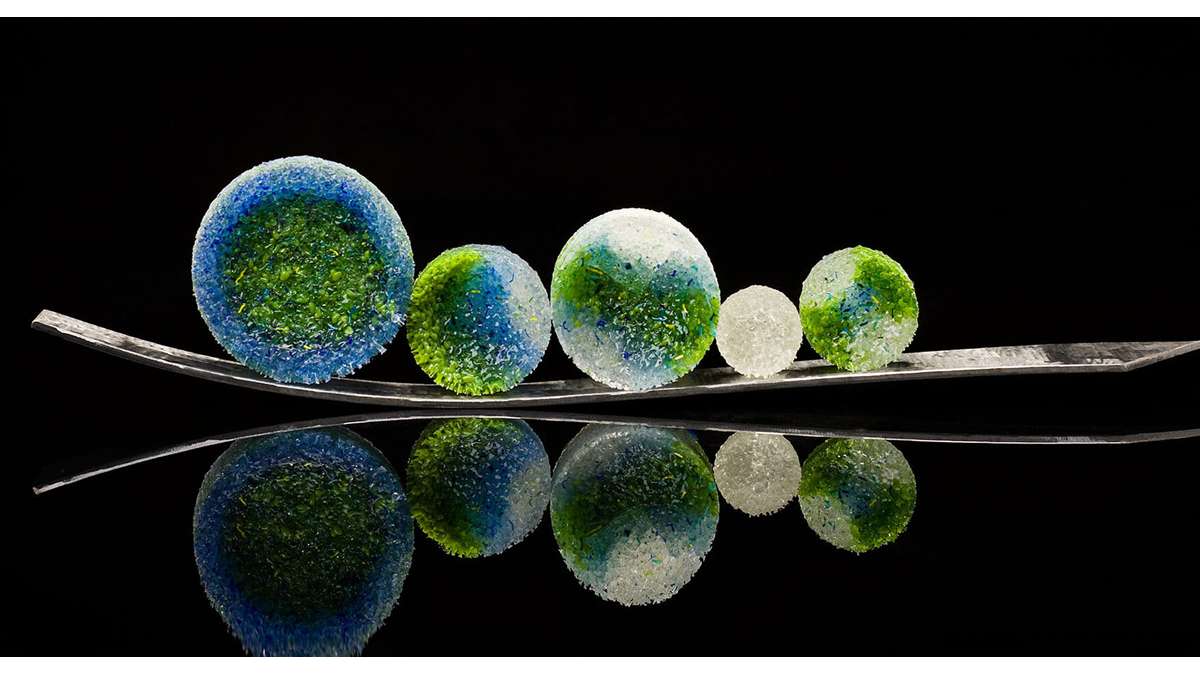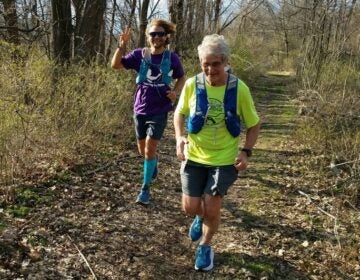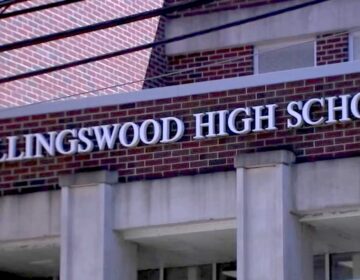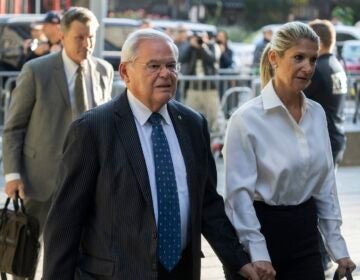New exhibit ‘Disruption’ captures the chaos of the modern world
It’s hard to find a place in the world where you are not bombarded by sound—on planes and trains; even the library is too cacophonous for quiet reading. Author Pico Iyer author says solitude is the new luxury. Disruption is out there, creating a storm. Even in the quiet car.
How do sculptors view the chaos? Artists from all three national chapters of the International Sculpture Center were invited to respond to the theme of “Disruption” in the eponymously titled exhibition on view at Grounds For Sculpture in Hamilton, New Jersey, through April 3, 2016.
Why would someone come to a 42-acre bucolic sculpture park to experience disruption, asks Grounds For Sculpture Chief Curator Thomas Moran. “Artists have always been about disruption—they have forged their path being disrupted,” he says. “These 18 sculptors are provoking ideas about how disruption affects our lives.”
A log, connected by hose and pipes to a planet of poisonous mushrooms and a cube with an image of a Japanese beetle taking over, is hollowed out and filled with beehives, showing the disruption the honeybee faces. Atop is cracked concrete, where a blade of grass manages to grow in this mixed media work by Victoria Fuller that addresses climate change, sustainability, water usage, and how the whole ecosystem has to work for us to survive. “Human activity disrupts the processes of nature through development, destruction of plant and animal habitat, deforestation and the introduction of chemicals,” she says. “We do things that make no sense.”
There’s a sound permeating the gallery space, like cosmic dance music. It comes from Nick Dong’s “Lepton Collision,” a drum-like form on which objects spin mystically. A viewer can easily become hypnotized trying to figure it out, a sort of antidote to distraction. There are positives and negatives at work here, keeping the objects levitated and turning.
Roger Colombik, from Texas, is interested in banned books. An author himself, as well as a sculptor, his ledge of copper colored bronze books, looking well-worn, are engraved with the words “Absence” and “Presence.” Also decipherable is the word “fernweh,” German for wanderlust, or itchy feet. The peripatetic artist sees absence and presence as dueling protagonists. He writes, “Ahhh Elizabeth. What can I say?/ When I am at home I dream of the road./ When I am on the road I dream of home.”
“I’m a storyteller,” says Columbik. “I believe in narrative structure. I love the relationship of language with visual form.” Columbik, who is working with his wife to help resettle refugees in Texas (“I’m turning my wanderlust into social practice”), says he loves getting lost in the world. “It all starts with longing to be far away and yet have a wonderful life at home.”
In “The Dribble Portraits” (ceramic, acrylic, wood), dripping, bulging, oozing and expanding, Nikki Renee Anderson addresses the disruption a new mother faces, wanting to provide stability while facing chaos. “My recent work was conceived of and created while in my early experiences of motherhood and investigates the physical and psychological experiences of pregnancy and motherhood,” she writes.
Working in pate de verre glass and steel, Lin McJunkin addresses “Eaarth in the Balance.” The spelling for “Eaarth” comes from climate change activist Bill McKibben, who says the chemical composition of the earth’s atmosphere is not the same now as it was when he was born 55 years go, and therefore we live on a different planet, requiring a new name. “Eaarth in Balance” is a progression of five glass cylinders, in blues and greens, representing the Earth in various stages of disintegration. “We have to hope, that’s why we’re doing this,” she says, “to celebrate the Earth we’re trying to preserve.”
Be sure to look up, where you will see “Horizon Skimmer” (oxidized mixed media) by James K.M. Watts. This enormous insect-like creature has spun a web of rusty barbed wire. Using discarded refuse, Watts says “Even in ruin and abandonment there is renewal and rebirth, an intricate paradox of decay and regeneration.”
“Luminous Bereavement” by Kaneem Smith is an enormous enclosed area made of burlap coffee sacks, parts embroidered or with factory stampings of the names of coffee-growing regions. “By creating thought-provoking installations out of repurposed fabric materials for my sculptural investigations, I hope to challenge the viewer to participate in a dialogue that references global concerns on ethical trade, the West’s over-consumption of natural resources, colonialist interactions on the natural environment and the economy of developing nations,” he says.
Boats may be in the public consciousness these days, as boats deposit displaced persons along European shores. Maru Hoeber sees boats as metaphors for the journey through life, “A reminder that we are not separate from our environment.” Her delicate work in unglazed porcelain shows huddled masses yearning to be free. “This particular boat is built from my concern for current events, as displaced people all over the world continue the thousands-of-years of migration to escape violence, poverty, persecution and natural disasters, in search of survival and a better life.” These beautiful figures remind us that refugees are not anonymous, they are our mothers and fathers, our children and grandchildren.
“People say that we create technologies which alienate us,” say the authors of The Age of Earthquakes, “but the fact is that anything made by humans is a de facto expression of humanity.”
__________________________________________________________
The Artful Blogger is written by Ilene Dube and offers a look inside the art world of the greater Princeton area. Ilene Dube is an award-winning arts writer and editor, as well as an artist, curator and activist for the arts.
WHYY is your source for fact-based, in-depth journalism and information. As a nonprofit organization, we rely on financial support from readers like you. Please give today.









